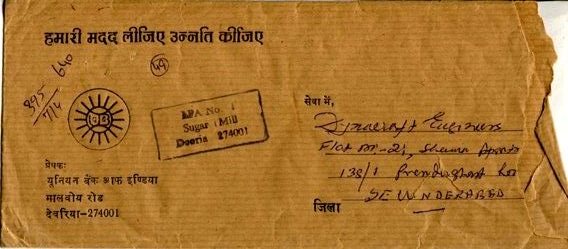LICENSED POSTAL AGENCY - A REPORT
by RAJESH PAMNANI

The Indian Postal System is the 7th largest in the world in terms of the volume of mail handled. There are 0.14 million Post Officesinthe country. The annual traffic of first and second class mail handled by the P.O. is about 12,000 million articles. They also handle30 million registered articles, 20 million parcels and 120 million money orders annually.
So far, the postal service has been the exclusive preserve of the department But recently, for the first time, the Government has invited private partcipation in 'running' post offices.
The decision to introduce the Licensed Postal Agency (LPA) has been taken in the face of increased demand for postal facilities, especially in Urban areas, and to reduce the congestion at the existing P.Os.
The opening of more departmental post offices has become a difficult proposition for a number of resons; these include -
(a) Finding suitable accommodation to house the P.O;
(b) The economic feasibility of opening a regular P.O. in new localities.
LPA System:
(I) LPAs are required to - (a) Sell stamps and stationery;
(b) Book registered articles.
It is the responsibility of the LPA to collect and despatch safely the postal artcles posted at the agency; and the clearance of letter boxes around its premises.
(II) The LPA is paid a commossion of 3% on the stamps and stationery sold through it. A commission of 50P is also paid on every registered article booked at the agency. (Note: Originally the commission on the sale of stamps and stationery was 5%, but since March '86 it has been reduced to 3%).
(III) The LPA has to work for a minimum of 3 hours a day, between 8a.m. and 7p.m. This type of flexibilitu is advantageous because LPAs are at carry on transactions on all days, even beyond the prescribed hours.
(IV) The following are given preference when considering the opening of a LPA -
(a) Charitable Institutuions;
(b) Co-operative Societies (c) War Widows;
(d) Mahila Samajams (Ladies' Co-operative Societies);
(e) Physically handicapped;
(f) Stamps Sale Agents;
(g) Selected business concerns; and
(h) Individuals may also be appointed.
(V) The rules and regulations are silent on the standard and format of the handstamps and cancellations etc. to be used by the LPAs. Mostly rubber stamps have been found used on registered artcles to indicate the office of origin. The stamps are usually cencelled by P.O. to which the LPA is attached. There is no way to differentiate between the mail originating from LPAs or the regular post office, except in the case of registered articles, which bear the LPA name stamp.
(VI) The exact date from which this scheme became operational is not clear; Newspaper reports refferring to this scheme started appearing from July '85 onwards, but the first P & T circular regarding the LPA that I have come across during the course of this study was dated 16-8-85.
This scheme has been quite popular. According to a press report on 15-3-86, there were about 400 LPAs in the country, out of which 320 were in Andhra
Pradesh.
→ Licensed Postal Agency - A Report
→ go to gallery page
|

